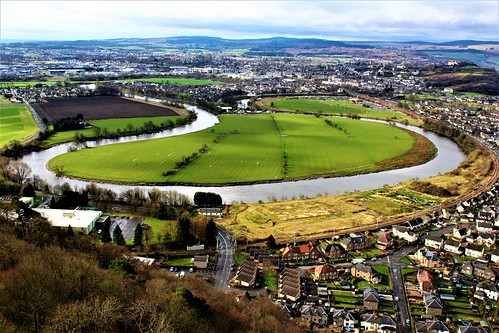Battle of Stirling Bridge, 1297
(Above image is a capture of Stirling Old Bridge which dates from 1400s or 1500s and is a proxy for the earlier wooden bridge.)
This evening, I am reporting on the Battle of Stirling Bridge which took place on September 11th 1297. This proved a turning point in the long-running conflict between the English and Scots with victory of the latter acting as a significant morale boost to what had been perceived as an underdog.
Stirling is about forty miles N.W.of Edinburgh. This was (and remains) the location of a strategically important castle the control of which was critical to the control of Scotland.
The bridge at centre of the battle was wooden and located about a hundred yards upstream of the existing stone built medieval bridge (above) which spans the River Forth and is situated on the plain between Stirling Castle and the Wallace Monument.
This battle arose as a function of the aggressive and predatory attitude of the English King, Edward I towards Scotland and his desire to bring Scotland under his (English) rule.
Below is landscape view of Stirling from Abbey Craig, including battle site, with castle in top right.
Below is view of Abbey Craig from Stirling Castle with the stone bridge discernible in middle distance.
On the morning of the battle, the English commander, John de Warenne overslept . By the time he awoke his forces had already commenced crossing the small wooden bridge which was narrow and permitted only two soldiers/cavalry abreast at a time.de Warenne recalled the troops and then issued fresh orders to cross. This allowed the Scots to control events in that as soon as a manageable number of soldiers had crossed they swooped down from their position on Abbey Craig (hill) and destroyed them, thereby cutting the English army in two. A rout of the English army ensued and to compound matters the bridge collapsed. The English lost about 10 pct of their army in the defeat which resulted in a restoration of Scottish pride and Wallace being entrusted with Guardianship of Scotland.
The National Wallace Monument, Abbey Craig, Hillfoots Road, Stirling, FK9 5LF
Visitors wishing to connect with the Wallace era may wish to visit the National Wallace Monument which is situated 2,6 miles N.E. of Stirling Castle. Summary information on the Monument is provided below.
- Reaches a height of 67 meters (220 feet).
- Sits atop a hill named Abbey Craig.
- Subject to prevailing weather conditions, visitors can climb the 246 internal steps to the top and benefit from the excellent views therefrom.
- Inside the Monument are exhibitions and displays concerning Wallace, his life and other facets of Scotland’s history.
- Architecture style is Gothic Revival.
- To reach the base of the Monument also entails an uphill climb which takes about 10 minutes. An optional courtesy shuttle bus service is usually available.
- Top of the Monument offers excellent opportunities for photography with views of the local landscape which include Stirling and River Forth, Stirling Castle and the Ochills (a range of hills running east-west).
- The Visitor Centre includes a gift shop and restaurant.





Comments
Post a Comment